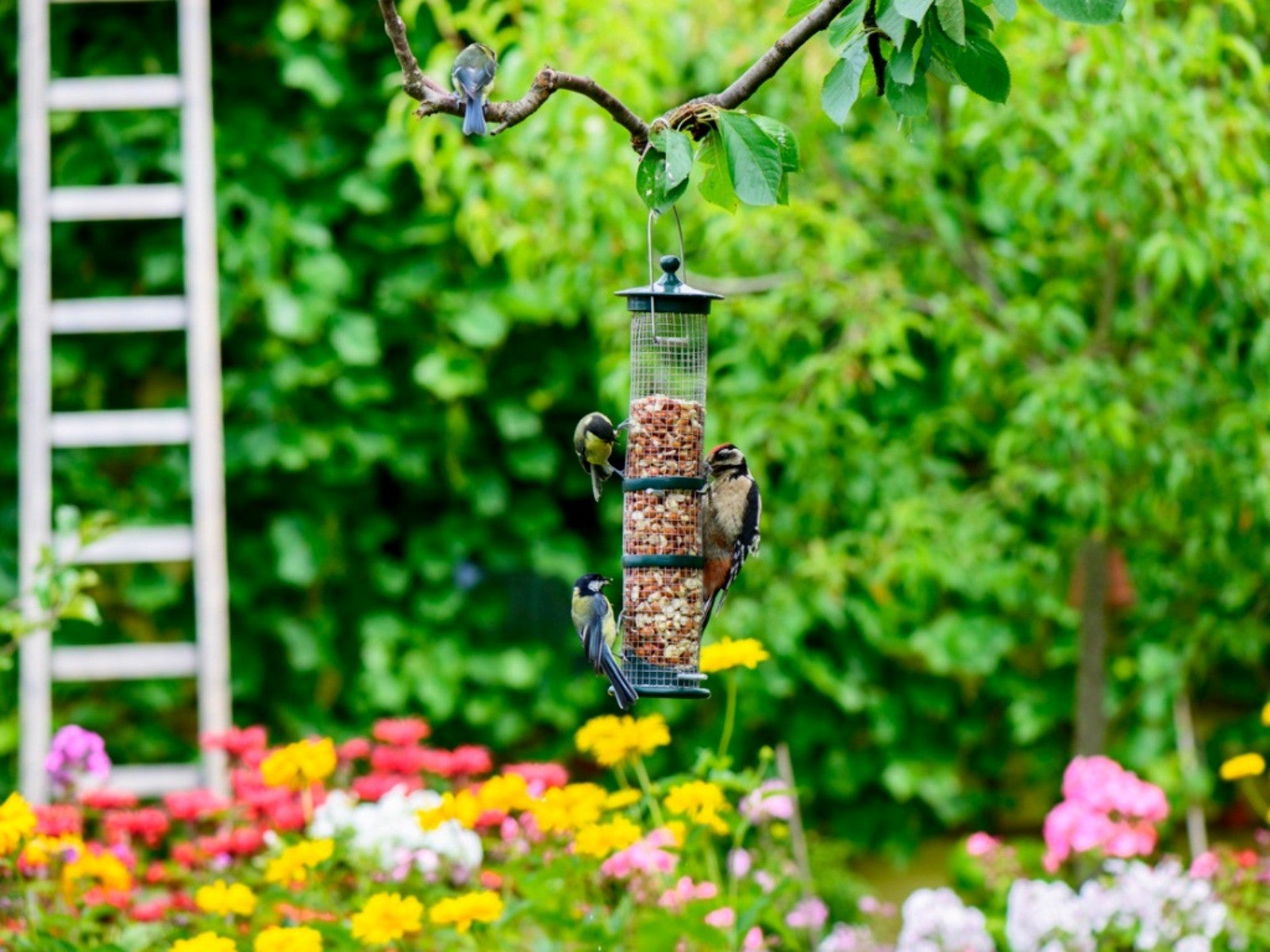
To those of us who garden, our garden is our sanctuary providing an area of respite, peace, meditation and nourishment for the body and soul. So it comes as no surprise that many other creatures enjoy our gardens as well, not the least of which are the birds. While you may already get some bird visitors you can actually expand your backyard bird habitat to create a bird sanctuary at home. Read on to learn how to make your backyard a bird sanctuary.
What to Include in a Bird Habitat
Birds are fun to watch, but they bring much more than entertainment to the garden. Many types of birds are responsible for dispersing seeds of various plants, ensuring propagation of the species.
Some bird species also help to carry pollen from one flower to another. Birds can also create a mess in their riotous gluttony to get at your berries, and sometimes they take more than their fair share, but overall, they do more good than harm.
If you want to entice more bird species into the garden you will need to provide three things. Birds need food, water and shelter, and by creating a backyard bird habitat you are providing these needs for your feathered friends.
How to Create Bird Habitat
So we’ve established that birds need food, water and shelter. Birds drink water wherever they can find it: from rain or sprinkler systems and even from food.
As to food, birds have varying appetites but generally they feed on fruit, seeds, nectar from some plants, insects and sometimes other small animals.
Plants provide a safe habitat for raising their young, for sleeping, protection from predators and shelter from inclement weather.
Sign up for the Gardening Know How newsletter today and receive a free copy of our e-book "How to Grow Delicious Tomatoes".
It is a good idea to know just what the birds are doing in your yard in any particular season. In the spring they are building their nests and will need small twigs, plant stems and vines. Nesting boxes and dead trees also make welcome nesting sites.
In the summer birds use your yard as shelter from the sun, a place with a cool drink and areas of bare dirt to take dust baths which ward off parasites.
In the winter months, birds are looking for shelter from the elements and a supply of food and water.
Backyard Bird Sanctuary Ideas
There are quite a few things to consider when creating a sanctuary for birds. You will of course want to give some consideration to your plantings. Vegetation should be of varying heights to allow for perching, nesting and foraging. Also plant in groupings or include a thicket where birds can go for protection from cats, hawks, the hot sun, etc.
When planting, dispense with straight lines and instead, think natural curves. Use native plants whenever possible and avoid non-natives which can out-compete native plants.
If you have areas of full sun, take advantage of them. Full sun means more food, so use those areas to plant fruit and nut trees.
Reduce your lawn, which birds have no use for, and eschew pesticides and other chemical controls.
Feeding the Birds
When incorporating plants into the landscape, consider what type of food the birds will need at varying times of the year. For instance, adults raising young need high energy from berries and wild cherries while fall migrating birds need fatty fruits such as flowering dogwood and spicebush to build up their fat reserves.
Over wintering birds need persistent fruit such as bayberry, crabapples, sumac and conifers to get them through the frigid temperatures.
If you find you are lacking in a food source for one reason or another, you can provide supplemental food. Provide a variety of food to attract a wider array of species. Only use suet from autumn through spring, as sun warmed suet can result in infections. Always situate feeders at least 10 feet (3 m.) away from buildings, trees and shrubs that cats can climb and/or hide in.
As for water, birds get much of what they require from food and also seek out birdbaths, ponds and other water features. Birdbaths should be scrubbed clean every few days. In the winter add a heater to keep the water from freezing.

Amy Grant has been gardening for 30 years and writing for 15. A professional chef and caterer, Amy's area of expertise is culinary gardening.
